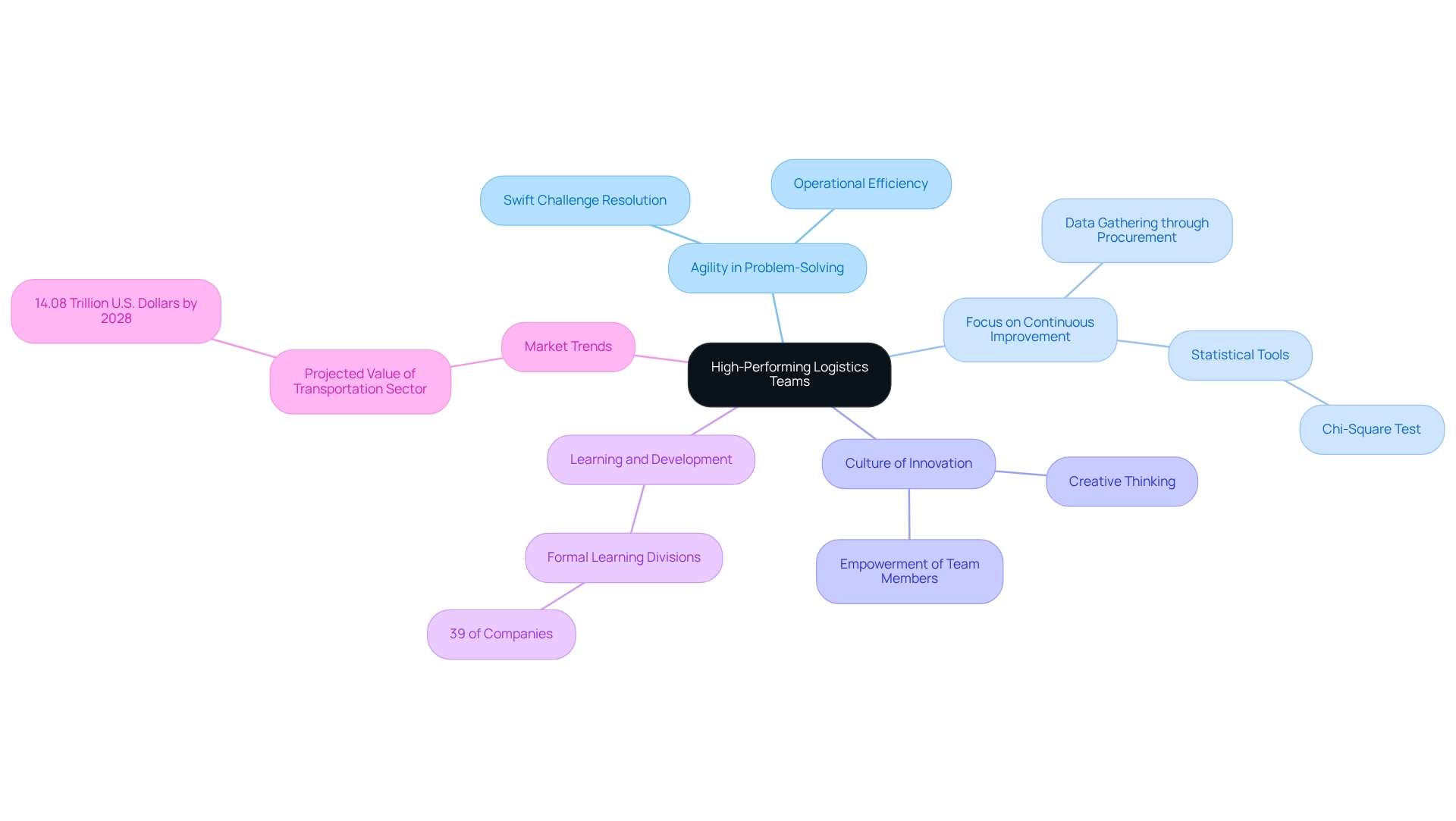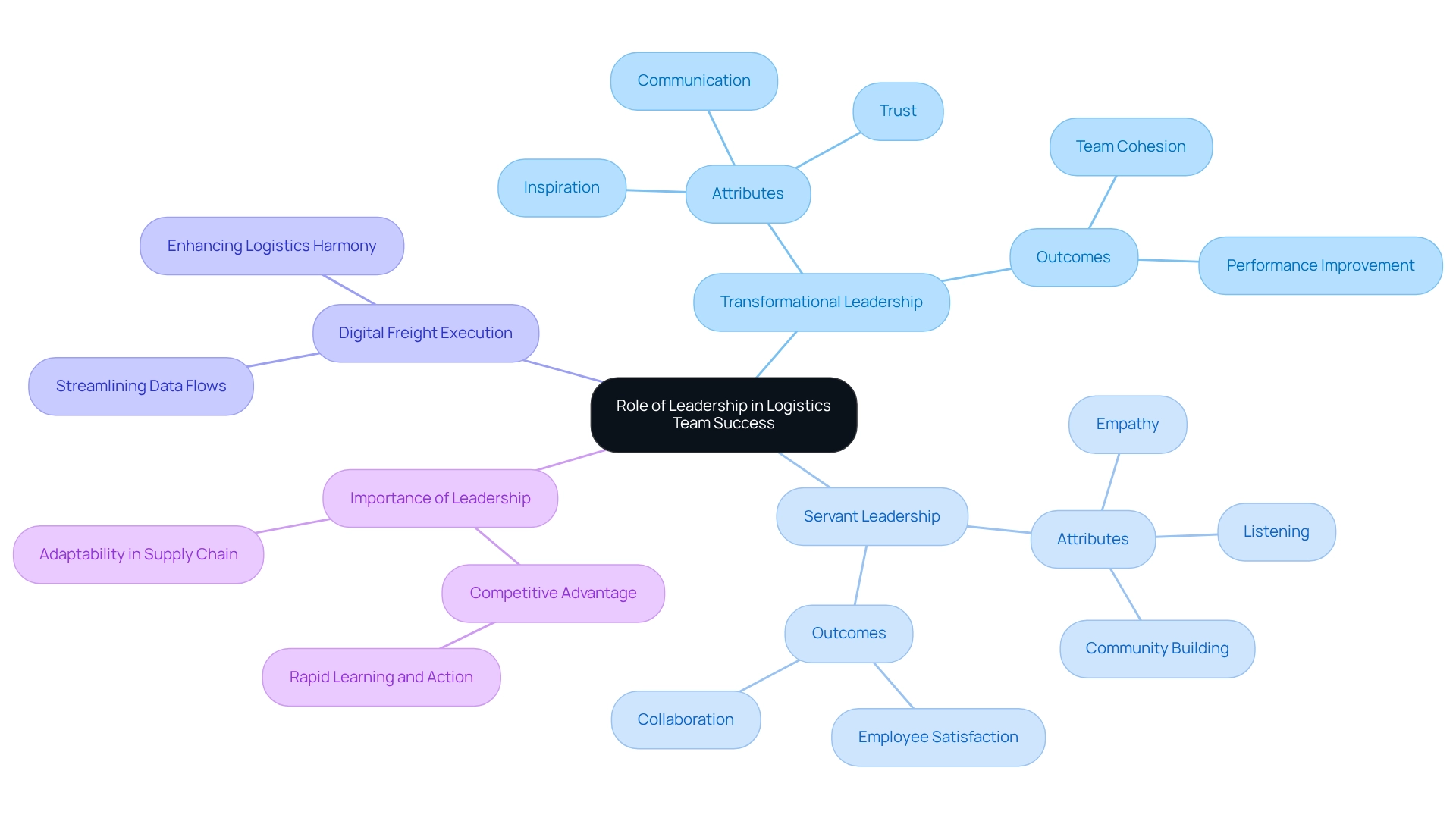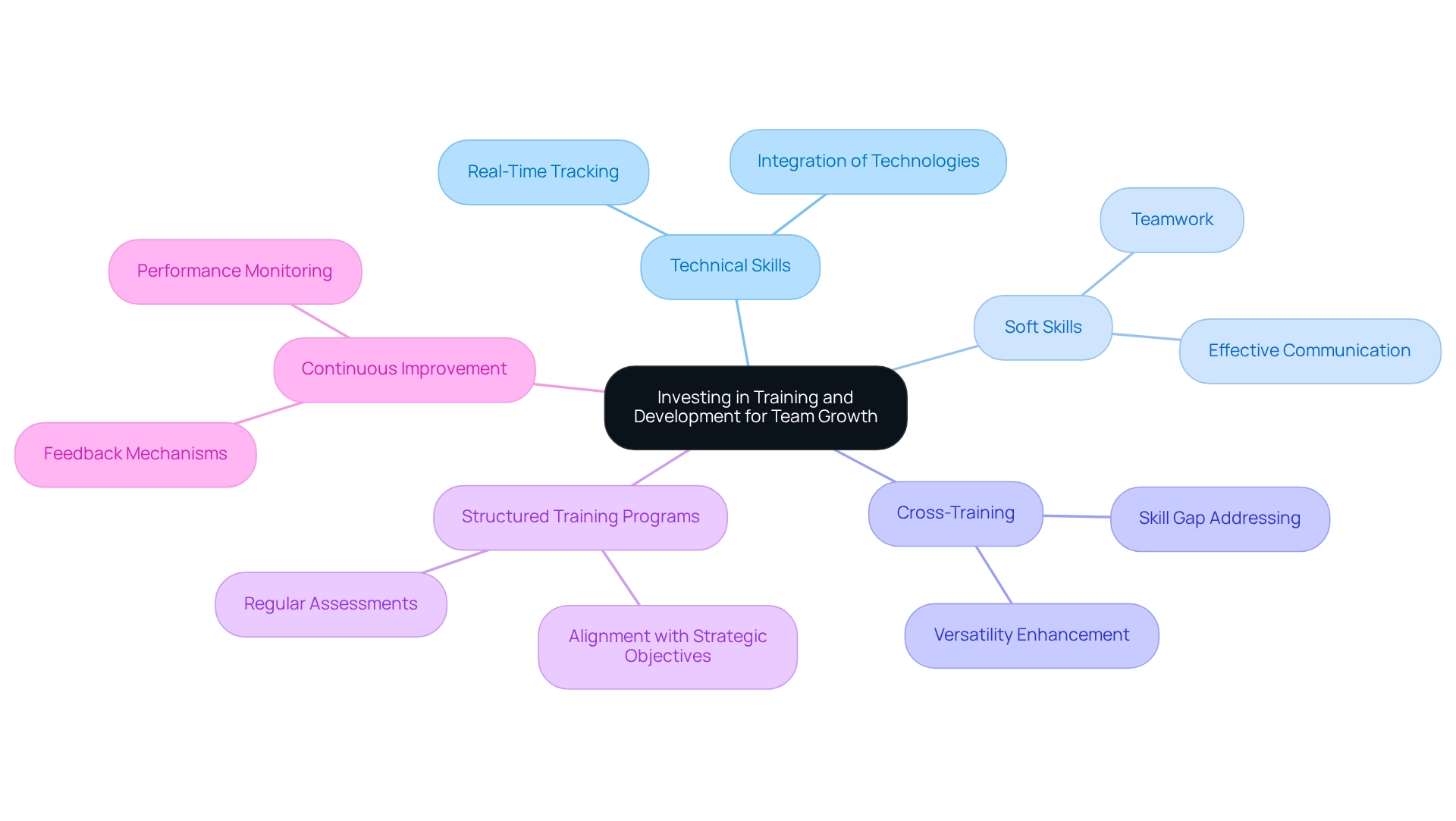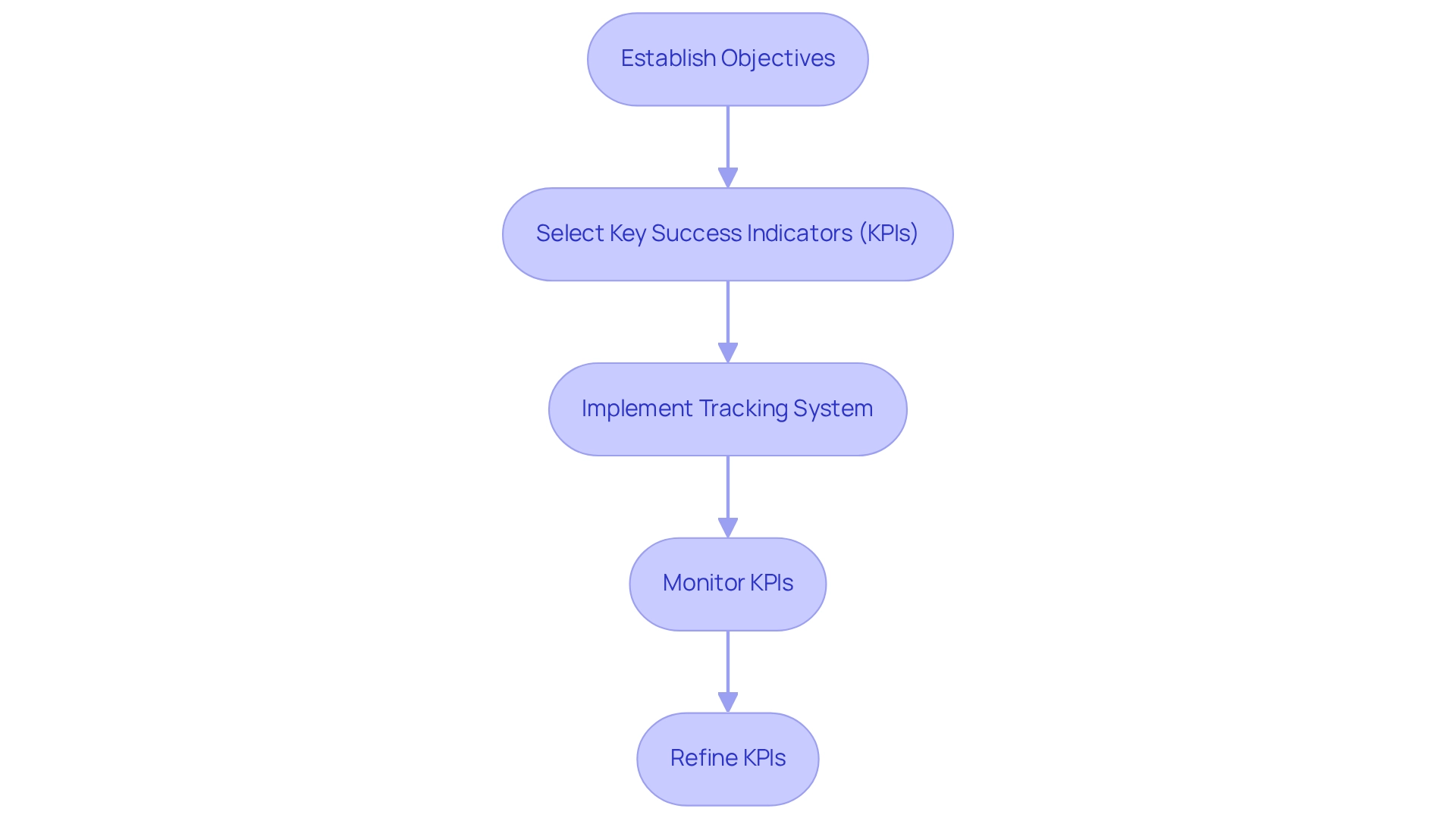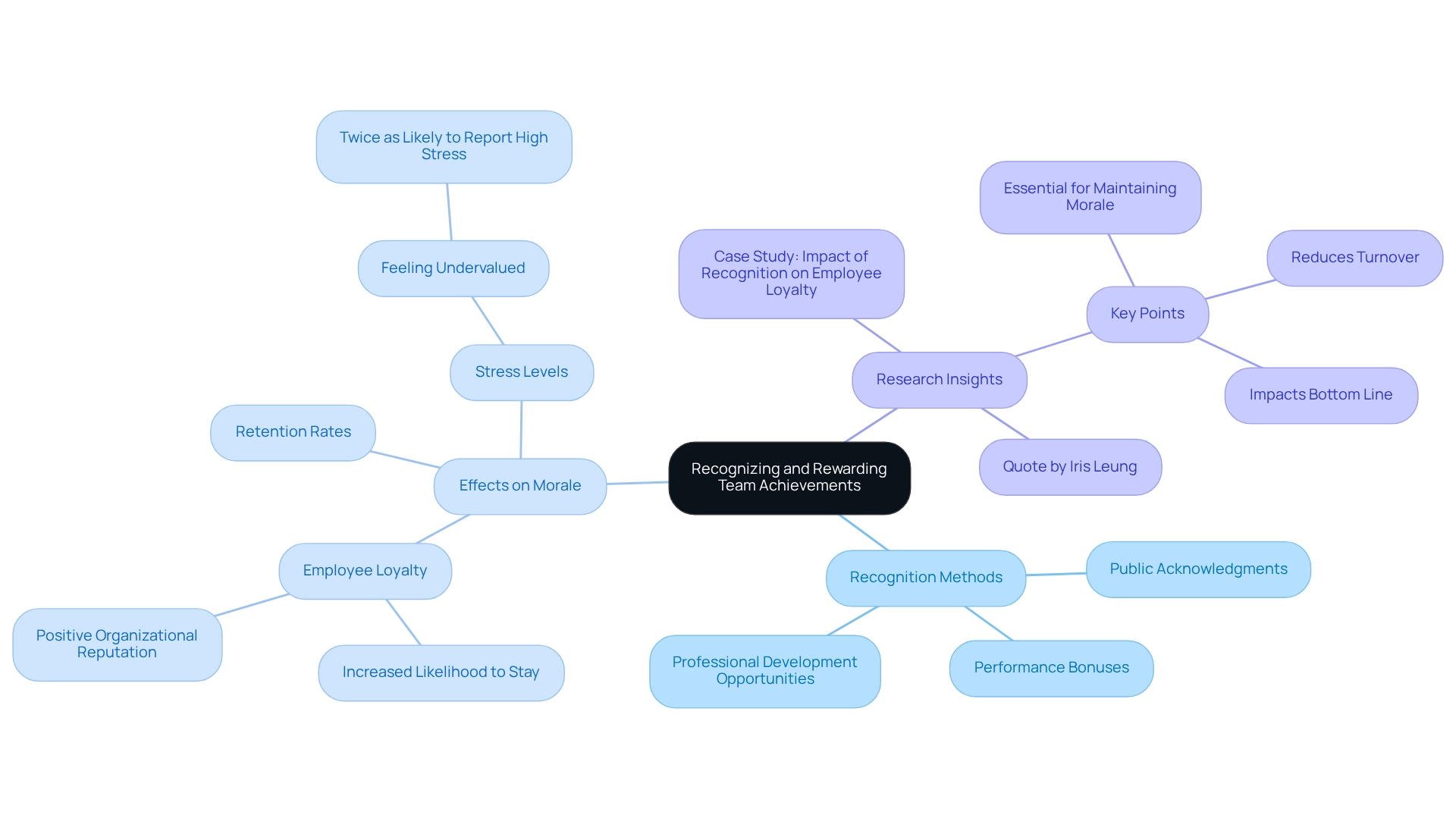Overview
Building and leading a high-performing logistics team requires fostering agility, continuous improvement, and effective leadership to adeptly navigate the complexities of supply chain management.
Transformational leadership, clear goal-setting, and a culture of collaboration and recognition emerge as essential practices that significantly enhance team dynamics and operational efficiency.
These elements are crucial for preparing logistics teams to meet the evolving demands of the industry.
Key Highlights:
- High-performing logistics teams excel in supply chain operations, agility, communication, and collaboration.
- Agility in problem-solving and a focus on continuous improvement are essential for operational efficiency.
- A culture of innovation empowers team members to contribute to process enhancements.
- By 2025, the transportation sector is projected to exceed a value of 14.08 trillion U.S. dollars, emphasizing the need for effective supply chain management.
- Transformational leadership fosters trust and collaboration, significantly enhancing team dynamics and performance.
- Continuous training and development are vital for logistics teams to adapt to industry demands and technological advancements.
- Clear goals and performance metrics help logistics teams measure success and identify areas for improvement.
- Encouraging collaboration within logistics teams enhances problem-solving and operational efficiency.
- Recognizing and rewarding team achievements boosts morale, employee engagement, and retention.
- Logistics teams face challenges such as rising costs and labor shortages, necessitating proactive strategies and effective communication.
Introduction
In the fast-evolving landscape of logistics, high-performing teams distinguish themselves not only through their efficiency but also through their remarkable ability to adapt and innovate in response to market demands. As the logistics industry prepares for unprecedented growth—projected to exceed $14 trillion by 2025—the necessity for exceptional collaboration, agile problem-solving, and strategic leadership has reached critical levels.
This article explores the essential elements that define successful logistics teams, examining how clear goals, continuous training, and a culture of recognition can drive performance and cultivate a competitive edge. By analyzing the intricate dynamics of teamwork and the pivotal role of effective leadership, it becomes clear that the future of logistics is contingent upon a steadfast commitment to excellence and adaptability within these teams.
Understanding High-Performing Logistics Teams
High-performing logistics teams are distinguished by their expertise in managing supply chain operations, their agility in responding to evolving market dynamics, and their unwavering commitment to meeting customer expectations. These teams typically exhibit outstanding communication skills, a clear comprehension of their responsibilities, and a strong emphasis on collaboration. Key characteristics of successful supply chain teams include:
- Agility in Problem-Solving: The capacity to swiftly tackle challenges as they emerge is essential for maintaining operational efficiency.
- Focus on Continuous Improvement: High-performing teams prioritize ongoing development, consistently evaluating processes to pinpoint areas for enhancement. This involves gathering data on supply networks through procurement initiatives that collect and analyze relevant information.
- Culture of Innovation: Fostering creative thinking and new ideas cultivates an environment where team members feel empowered to contribute to improvements.
Recent trends indicate that by 2025, the transportation sector is projected to exceed a value of 14.08 trillion U.S. dollars, as noted by Mohammad Ali, CEO of Cash Flow Inventory. This highlights the critical need for effective supply chain management practices. Notably, 39% of companies have established formal learning and development divisions, reflecting an increasing recognition of the necessity for continuous skill enhancement within transportation teams.
Moreover, the logistics team has recognized the utilization of statistical tools, such as the chi-square test, as a powerful approach to transforming supply chains. These tools yield actionable insights that can optimize inventory management, improve transportation efficiency, and evaluate supplier risks. Organizations that remain informed about these advancements can sustain a competitive advantage and enhance their operational efficiency.
The case study titled ‘Staying Updated with Statistical Tools’ underscores the importance of keeping analytical techniques current as new statistical tools and methodologies emerge, demonstrating the significance of continuous improvement and innovation within operational teams. Examples of successful management within these teams illustrate the efficacy of these practices. Companies that prioritize the development of these attributes not only enhance their operational performance but also position themselves for sustained success in a competitive landscape.
The Role of Leadership in Logistics Team Success
Leadership in supply chain management transcends mere operational supervision; it embodies the ability to inspire and motivate team members toward shared objectives. As we approach 2025, effective leaders are increasingly embracing styles such as transformational and servant leadership, which foster an environment of trust and collaboration. These leaders establish clear expectations, deliver consistent feedback, and promote open lines of communication—elements that are crucial for team cohesion.
Research indicates that transformational leadership significantly enhances leader-follower relationships, vital for organizational success in supply chain management. By engaging actively with their teams, leaders can quickly identify challenges and implement strategies that bolster both performance and morale. This proactive approach is particularly essential in navigating the complexities of supply chain management, where adaptability and responsiveness are paramount.
Consider a recent study on leadership behavior within transportation firms in Southeast Asia, which revealed that transformational leadership serves as the most effective framework for promoting flexibility and improving team dynamics. This finding aligns with the growing recognition of the transportation sector’s importance, especially in regions experiencing increased infrastructure investments, such as Thailand, where the transport industry is becoming increasingly critical.
Moreover, statistics reveal that organizations employing effective leadership practices in supply chain management report improved team performance and satisfaction. The integration of digital freight execution is also transforming the shipping industry by streamlining data flows and enhancing operational synergy, further underscoring the necessity for effective leadership in this evolving landscape. As Jack Welch aptly stated, “An organization’s ability to learn, and translate that learning into action rapidly, is the ultimate competitive advantage.”
This underscores the vital role of leadership in steering operational teams toward success, making it imperative for HR managers to prioritize effective leadership styles in their recruitment and development strategies.
Investing in Training and Development for Team Growth
To sustain a competitive advantage in the swiftly changing logistics environment, it is imperative for the logistics team to prioritize continuous training and development. This commitment encompasses not only technical skills training but also cross-training to enhance versatility and the development of soft skills to foster effective communication and teamwork. Organizations must implement structured training programs that align with their strategic objectives, addressing specific skill gaps within their teams.
Regular assessments and feedback mechanisms are essential for tailoring training initiatives to meet the dynamic demands of the industry. As supply chain management adapts to challenges such as labor shortages, rising operational costs, and excess capacity, the integration of new technologies and real-time tracking systems becomes indispensable. In fact, statistics reveal that 41% of shoppers now expect delivery within 24 hours, with 24% demanding delivery in under two hours. This underscores the urgency for the logistics team to be well-prepared to meet these evolving demands.
Successful supply chain training programs have demonstrated significant effectiveness, with companies reporting improved performance and reduced errors through ecosystem integration. This approach connects various internal and external systems into a unified platform, simplifying processes and enhancing data flow. As Marijn Overvest, Founder of Procurement Tactics, states, “Supply chain statistics reveal the most recent figures regarding the expansion of the industry.”
Logistics involves the meticulous planning of efficient storage and transportation of goods from their origin to the point of destination. By investing in comprehensive training and development, the logistics team can not only meet current industry standards but also anticipate future trends, particularly the growing emphasis on automation and real-time tracking as the logistics sector evolves into 2025. The significance of continuous training cannot be overstated; it is a crucial element in creating high-performing teams capable of managing the complexities of the market and achieving outstanding outcomes.
Establishing Clear Goals and Performance Metrics
Setting clear goals and success metrics is imperative for the logistics team to fully grasp their objectives and measure achievement effectively. These objectives must align with the overarching business strategy and be communicated transparently to all team members. Key success metrics—including delivery times, order accuracy, customer satisfaction rates, on-time delivery rates, and customer retention rates—should be consistently monitored and evaluated.
This systematic, data-informed strategy not only empowers teams to identify areas for improvement but also allows them to recognize their successes, thereby fostering a culture of accountability and excellence.
In 2025, organizations are increasingly recognizing the importance of measurement metrics in logistics. For instance, organizations that implement structured key success indicators (KPIs) often experience enhanced operational efficiency. A case study on KPI implementation underscores a structured, data-driven process that encompasses establishing objectives, selecting relevant indicators, implementing a tracking system, and regularly monitoring and refining the KPIs.
This approach ensures that KPIs align with business requirements and are effectively integrated into operations, leading to continuous improvements in outcomes.
Moreover, data reveals that error correction costs can vary significantly based on team performance, with top performers incurring costs of $20.00 per hour compared to only $0.33 per unit per minute for standard contributors. This disparity underscores the critical need for clear objective-setting and evaluation metrics in supply chain management. Expert insights emphasize that striving for ‘systemically aligned’ measures and objectives is essential for understanding the overall state of organizational supply chains.
As David Bennett, Founder and Operations & Transformation Leader, asserts, such alignment is pivotal for achieving operational success. By establishing clear goals and performance metrics, the logistics team can enhance their operational effectiveness while aligning their efforts with broader business objectives, ultimately driving success throughout the organization.
Encouraging Collaboration and Teamwork
Encouraging cooperation and group effort within the logistics team and other supply chain units is crucial for improving problem-solving skills and promoting innovation. Organizations must cultivate an environment that encourages open communication, aligns shared goals, and fosters mutual respect among group members. Participating in group-building activities, holding regular meetings, and initiating joint projects can greatly enhance connections and boost group unity.
Studies show that collaborative groups are 33% more likely to finish projects punctually, highlighting the essential role of cooperation in operational performance. Furthermore, a study revealed that groups of four took 44% longer to build a Lego figure compared to pairs, underscoring the efficiency gains achievable through effective collaboration. This discovery aligns with the supply chain context, where the logistics team can drive efficient collaboration, resulting in quicker project completion and enhanced operational effectiveness.
To further improve collaboration, the logistics team should adopt strategies such as:
- Defining clear roles and responsibilities
- Promoting feedback
- Acknowledging individual contributions
Expert opinions suggest that fostering a culture of teamwork in the logistics team not only improves coordination and communication but also enhances task accountability, leading to better overall performance. Significantly, 39% of workers feel that individuals in their organization do not cooperate sufficiently, emphasizing the necessity for companies to focus on collaborative initiatives.
In 2025, the advantages of collaboration within supply chain groups, particularly with the logistics team, are clearer than ever, as organizations strive to adjust to swiftly evolving market needs. By prioritizing collaboration initiatives, the logistics team can leverage diverse viewpoints alongside operational groups, respond more effectively to challenges, and drive continuous enhancement, ultimately positioning themselves for success in a competitive environment. This collaborative method can also improve the hiring process, ensuring that operational groups are filled with individuals who not only possess the required skills but also excel in a cooperative setting.
Boutique Recruiting specializes in sourcing high-quality contract employees across diverse industries, including accounting, administrative, executive, finance, human resources, legal, marketing, operations, sales, and technical roles. Their extensive pool of vetted and qualified talent guarantees that operational groups have access to the specialized knowledge required to thrive. Their dedication to outstanding candidate benefits and quality temporary staffing solutions further bolsters the growth of a collaborative and efficient workforce in the supply chain.
Contact Boutique Recruiting today to discover how they can meet your staffing needs.
Recognizing and Rewarding Team Achievements
Recognizing and rewarding team achievements is essential for sustaining high morale and motivation within the logistics team. Implementing formal recognition programs that celebrate both individual and collective successes can significantly enhance workplace culture. These programs may include:
- Public acknowledgments
- Performance bonuses
- Opportunities for professional development, such as additional training or mentorship
Research indicates that 88% of employees believe that recognition increases their likelihood of staying with their company and referring others, underscoring the importance of fostering loyalty through appreciation. This is further supported by the case study titled “Impact of Recognition on Employee Loyalty,” which highlights that recognition not only enhances employee loyalty but also positively impacts the organization’s reputation. Furthermore, employees who feel undervalued are twice as likely to report high levels of stress, which can adversely affect productivity and retention rates.
To foster a culture of gratitude, leaders should consistently recognize contributions, whether through group meetings, newsletters, or dedicated recognition events. For instance, the logistics team can implement peer-to-peer recognition platforms that enable colleagues to celebrate each other’s achievements in real-time. This not only boosts morale but also encourages a collaborative environment where employees feel valued and motivated to excel.
As Iris Leung notes, “From the strong correlation between recognition and increased productivity to its role in boosting employee engagement and retention, these insights will help you understand why recognition is a crucial component of any effective HR strategy.” By prioritizing recognition, organizations can create an environment focused on achievement and appreciation, ultimately leading to enhanced employee engagement and retention.
Overcoming Challenges to Maintain High Performance
Logistics groups are increasingly confronted with a myriad of challenges, such as rising costs, labor shortages, and stringent regulatory compliance. To sustain high achievement in this dynamic landscape, organizations must proactively identify these obstacles and implement effective strategies to overcome them. This is where Boutique Recruiting emerges as your strategic partner in securing top talent.
By leveraging our expertise in sourcing high-quality contract workers across diverse sectors, we can assist supply chain groups in navigating these challenges with efficiency.
Investing in cutting-edge technology, including AI-driven route optimization and micro-fulfillment centers, is essential. Deloitte Supply Chain Trends highlights that transportation companies are significantly investing in these areas to meet surging demand. Furthermore, enhancing employee training programs is crucial for improving retention rates and equipping staff with the necessary skills to adapt to shifting market demands. Boutique Recruiting can help identify candidates who not only possess the requisite skills but also align with a culture of adaptability, enabling supply chains to respond swiftly to market fluctuations and customer needs.
Effective communication between supply firms and B2B clients is vital to prevent delays and misunderstandings that can hinder operational performance. As evidenced by DHL’s customer-centric strategy, integrating customer feedback into operational processes not only elevates service delivery but also strengthens client relationships. In 2025, supply chain groups will face ongoing challenges, including a decline in the percentage of individuals endorsing careers in supply chain management and transportation, which dropped from 19.4% in 2022 to 18.3% in 2024.
This statistic underscores the importance of addressing workforce issues and improving the public perception of the supply chain profession.
Moreover, with 64.6% of the global population utilizing digital platforms, the increasing reliance on digital communications highlights the need for effective communication strategies in supply chain operations. By directly addressing these challenges and leveraging technology, along with the right talent sourced through Boutique Recruiting, logistics teams can sustain their performance and continue to effectively achieve organizational objectives. Schedule now to gain exclusive access to the best companies and enhance the capabilities of your logistics team.
Conclusion
High-performing logistics teams are characterized by their agility, commitment to continuous improvement, and innovative spirit. The rapid evolution of the logistics landscape necessitates that organizations prioritize clear goals, ongoing training, and a culture of recognition to foster excellence. As the industry approaches a projected growth of over $14 trillion by 2025, the ability to adapt and collaborate effectively becomes critical.
Leadership plays a pivotal role in guiding logistics teams toward success. Transformational and servant leadership styles foster an environment of trust and open communication, enhancing team dynamics and performance. By establishing clear expectations and promoting collaboration, leaders inspire their teams to navigate the complexities of logistics management with confidence.
Investing in training and development is essential for logistics teams to remain competitive. Structured programs addressing both technical and soft skills ensure that team members are equipped to meet evolving market demands. Moreover, recognizing and rewarding achievements cultivates a positive workplace culture that boosts morale and retention.
In conclusion, the future of logistics hinges on the ability of teams to collaborate effectively, embrace continuous learning, and adapt to challenges. Organizations that prioritize these elements will enhance their operational efficiency and position themselves for long-term success in a dynamic and competitive environment. By fostering a culture of excellence and adaptability, logistics teams can thrive, ultimately driving the industry forward into a promising future.
Frequently Asked Questions
What distinguishes high-performing logistics teams?
High-performing logistics teams are distinguished by their expertise in managing supply chain operations, agility in responding to market dynamics, and commitment to meeting customer expectations. They exhibit outstanding communication skills, a clear understanding of their responsibilities, and a strong emphasis on collaboration.
What are the key characteristics of successful supply chain teams?
Key characteristics include agility in problem-solving, a focus on continuous improvement, and a culture of innovation. These teams are capable of swiftly tackling challenges, prioritize ongoing development, and foster creative thinking among team members.
How does continuous improvement manifest in high-performing logistics teams?
Continuous improvement involves consistently evaluating processes to identify areas for enhancement. This includes gathering and analyzing data on supply networks through procurement initiatives.
What is the projected value of the transportation sector by 2025?
The transportation sector is projected to exceed a value of 14.08 trillion U.S. dollars by 2025.
What percentage of companies have established formal learning and development divisions?
39% of companies have established formal learning and development divisions, reflecting the need for continuous skill enhancement within transportation teams.
How do statistical tools benefit logistics teams?
Statistical tools, such as the chi-square test, provide actionable insights that can optimize inventory management, improve transportation efficiency, and evaluate supplier risks, helping organizations maintain a competitive advantage.
What is the role of leadership in supply chain management?
Leadership in supply chain management involves inspiring and motivating team members toward shared objectives, establishing clear expectations, delivering feedback, and promoting open communication, which are crucial for team cohesion.
What leadership styles are becoming more prevalent in supply chain management?
Transformational and servant leadership styles are increasingly embraced, as they foster trust and collaboration within teams.
How does transformational leadership impact team dynamics?
Transformational leadership enhances leader-follower relationships and promotes flexibility and improved team dynamics, which are essential for organizational success in supply chain management.
What is the importance of effective leadership practices in organizations?
Organizations employing effective leadership practices in supply chain management report improved team performance and satisfaction, which is vital for navigating the complexities of supply chain operations.
